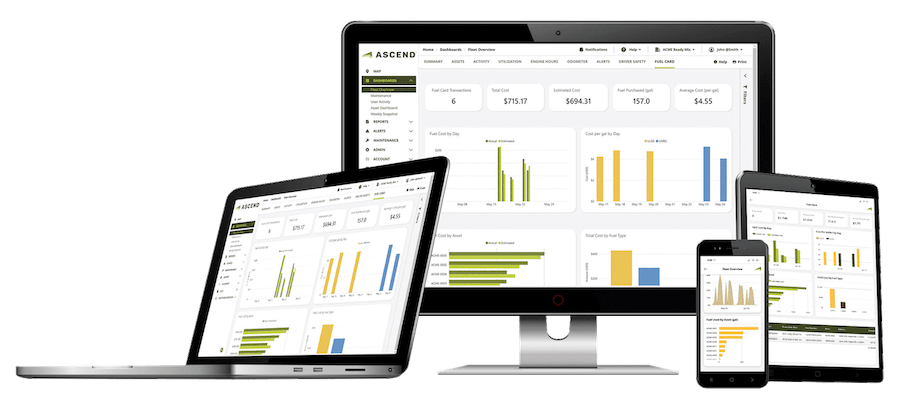Through better asset tracking, improved efficiency, and multiple drivers of ROI, telematics can save your company real money
Like any investment you make in your business, you’re going to want to understand what kind of return you can expect to see for your telematics investment. The good news is that telematics, by giving you access to valuable tools and a wealth of useful data on your fleet, produces ROI in multiple ways – including some you may not have considered – and those returns can add up to tens of thousands of dollars annually.
Let’s look at some of the telematics ROI savings possible.

Better fuel efficiency. Improving fuel efficiency is an evergreen concern for fleet operators, as fuel represents one of their largest operating expenses. But recent high fuel costs have made it an even more pressing priority. A telematics solution can help manage fuel costs in a variety of ways, including more efficient route planning, monitoring engine status to help reduce excessive – and costly – idling, and tracking speed to help ensure drivers don’t waste fuel.
While these measures can help save hundreds of dollars per vehicle per year, the impact on your entire fleet is where the real savings lie. For example, if these measure drive $400 per year in fuel savings for each of your vehicles, and you operate 30 vehicles, you would save $12,000 total on fuel alone with the right fleet fuel management system.
Better operational efficiency. Route planning not only improves fuel efficiency but can also make it possible to schedule additional revenue-generating service calls or deliveries and facilitate more effective customer service. Then there’s how telematics can enable the automation or simplification of manual tasks that previously fell to drivers, including maintaining driver logs, inspections, and paperwork required for invoicing. Among the advantages of these fleet automation efficiencies is that they reduce the administrative burden on drivers and technicians, allowing them to instead focus on the core duties of their jobs which promotes improved job satisfaction and engagement while reducing turnover.
According to one source, when an employee leaves, it costs the company about one-third of an employee’s salary. For an employee making $36,000, the cost of their leaving would be $12,000. When multiple dissatisfied employees leave, the – preventable – costs can add up.
Improving equipment availability. Vehicle and asset location tracking is a major priority for construction companies. When a piece of equipment is needed on a job but is missing (often because a project manager has commandeered and “hidden” it at their job site to ensure its availability when they need it), the company must fork over money for expensive equipment rentals. With the GPS tracking and geofencing capabilities available through a telematics solution, equipment can be located and deployed to generate revenue, instead of being sidelined and costing the company money.
By tracking location and mileage, telematics also can help to cut down on unauthorized vehicle use and misuse of fleet fuel cards and locate stolen equipment. Always knowing the whereabouts of your vehicles and equipment can save your company a great deal of money and minimize management headaches.
Avoiding costly downtime. The digital inspection capability of a telematics system makes it possible to identify needed repairs and fully plan the schedule to minimize the time the vehicle or piece of equipment is out of service. Preventative maintenance can also be tracked, and many OEM-recommended maintenance schedules uploaded to the platform, to ensure vehicles and equipment operate at peak performance and fuel efficiency.
As with equipment that can’t be located, equipment that is out of service for repairs can cost the company greatly when it could instead be generating revenue. This is especially important for expensive yellow iron for which utilization needs to be optimized to drive profitability.
Understanding the Full Impact
While each of these cost savings is significant, increased fleet ROI comes into focus when they are combined. Managing fuel consumption, improving fleet efficiency, knowing the whereabouts of your vehicles and assets and ensuring they operate as they should, keeping your employees happy and engaged – none of these are simple operational goals.
But with telematics, they are all not only doable, but profitable – to the tune of (at least) tens of thousands of dollars annually!

